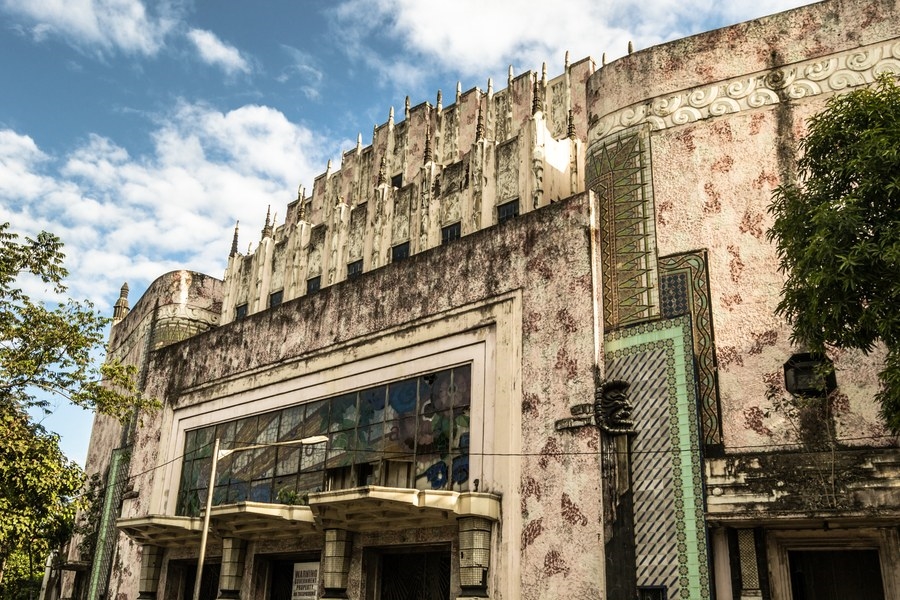The Manila Metropolitan Theater: A Glimpse into Its Past
The Manila Metropolitan Theater, often referred to as the “Met,” is a cultural and architectural gem located in the heart of Manila, Philippines. This iconic structure has witnessed the ebb and flow of the country’s history, serving as a testament to the rich cultural heritage of the Philippines. For those interested in the history of this magnificent theater, understanding its past provides insight into its significance and the role it has played in the cultural landscape of Manila.
Origins and Architectural Marvel
The Manila Metropolitan Theater was designed by the Filipino architect Juan M. Arellano and was inaugurated on December 10, 1931. The theater is a prime example of Art Deco architecture, a style characterized by its bold geometric patterns and vibrant colors. Arellano’s design was a fusion of Western and Filipino elements, incorporating local motifs and materials, which made the Met stand out as a unique architectural masterpiece.
The theater was built to serve as a venue for various cultural performances, including operas, concerts, and plays. Its construction was part of a broader movement to modernize Manila and establish it as a cultural hub in Southeast Asia. The Met’s grand facade, adorned with intricate sculptures and stained glass windows, quickly became a symbol of Manila’s artistic aspirations.
The Theater’s Role in Philippine Culture
Throughout its history, the Manila Metropolitan Theater has been a focal point for the arts in the Philippines. During its early years, the theater hosted a wide array of performances, from local productions to international acts. It became a gathering place for artists, intellectuals, and the general public, fostering a vibrant cultural scene in Manila.
The Met played a crucial role in promoting Filipino talent and showcasing the country’s rich artistic traditions. It provided a platform for local artists to perform and gain recognition, contributing to the development of a distinct Filipino cultural identity. The theater also served as a venue for important cultural events and celebrations, further cementing its status as a cultural landmark.
Challenges and Restoration Efforts
Despite its initial success, the Manila Metropolitan Theater faced numerous challenges over the years. The outbreak of World War II and subsequent battles in Manila led to significant damage to the structure. Post-war efforts to restore the theater were hampered by financial constraints and changing cultural priorities.
In the decades that followed, the Met experienced periods of neglect and disrepair. However, recognizing its historical and cultural significance, various restoration efforts were initiated to revive the theater. These efforts aimed to preserve the architectural integrity of the building while modernizing its facilities to accommodate contemporary performances.
In recent years, the theater has undergone significant restoration work, with the goal of returning it to its former glory. These efforts have been supported by both government and private entities, highlighting the importance of preserving cultural heritage for future generations. The restored theater now stands as a testament to the resilience of Filipino culture and the enduring legacy of the Manila Metropolitan Theater.
